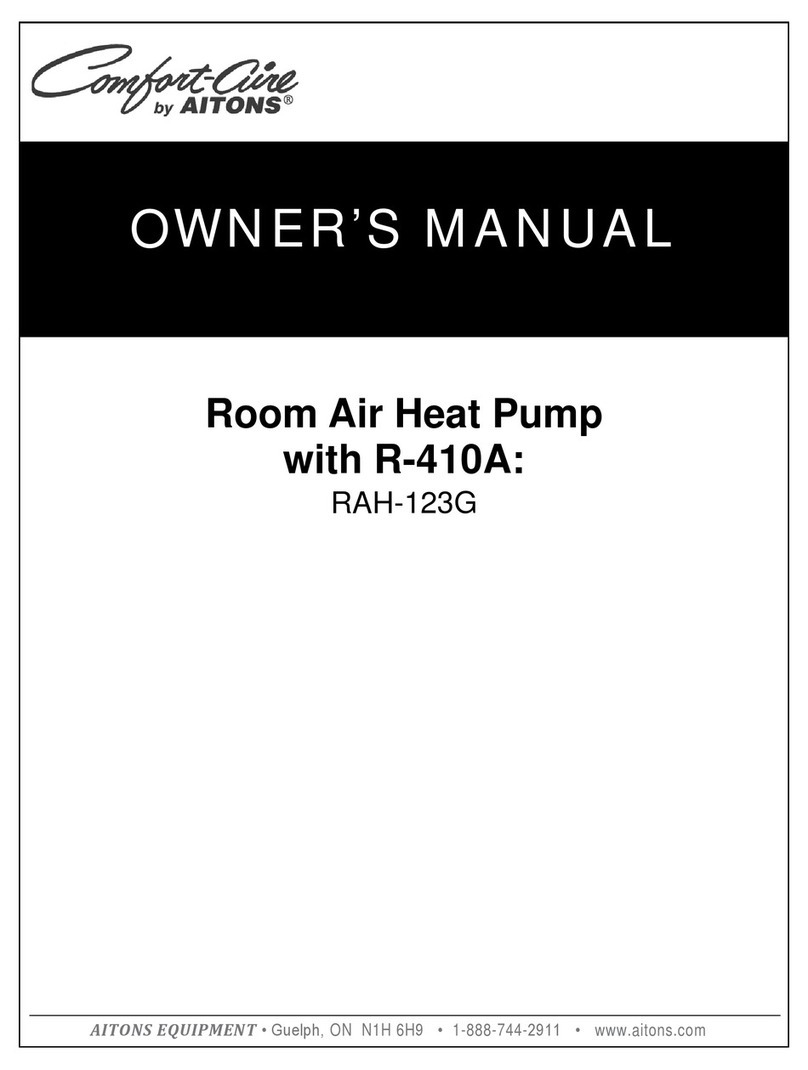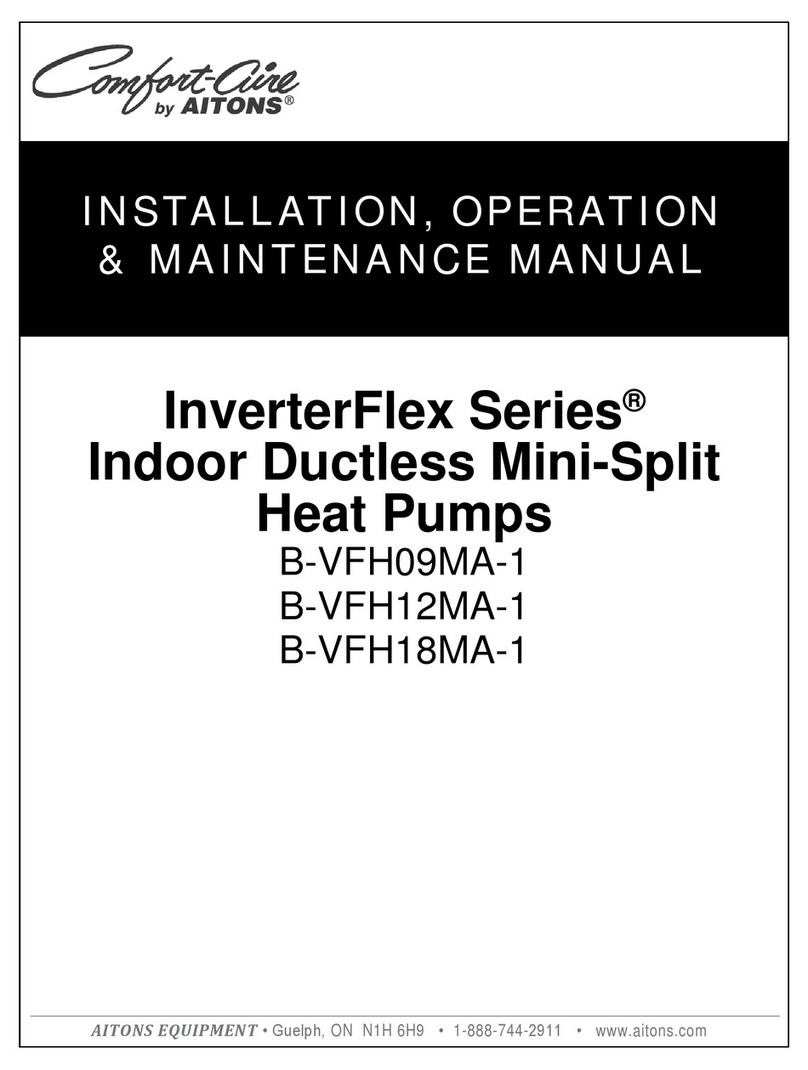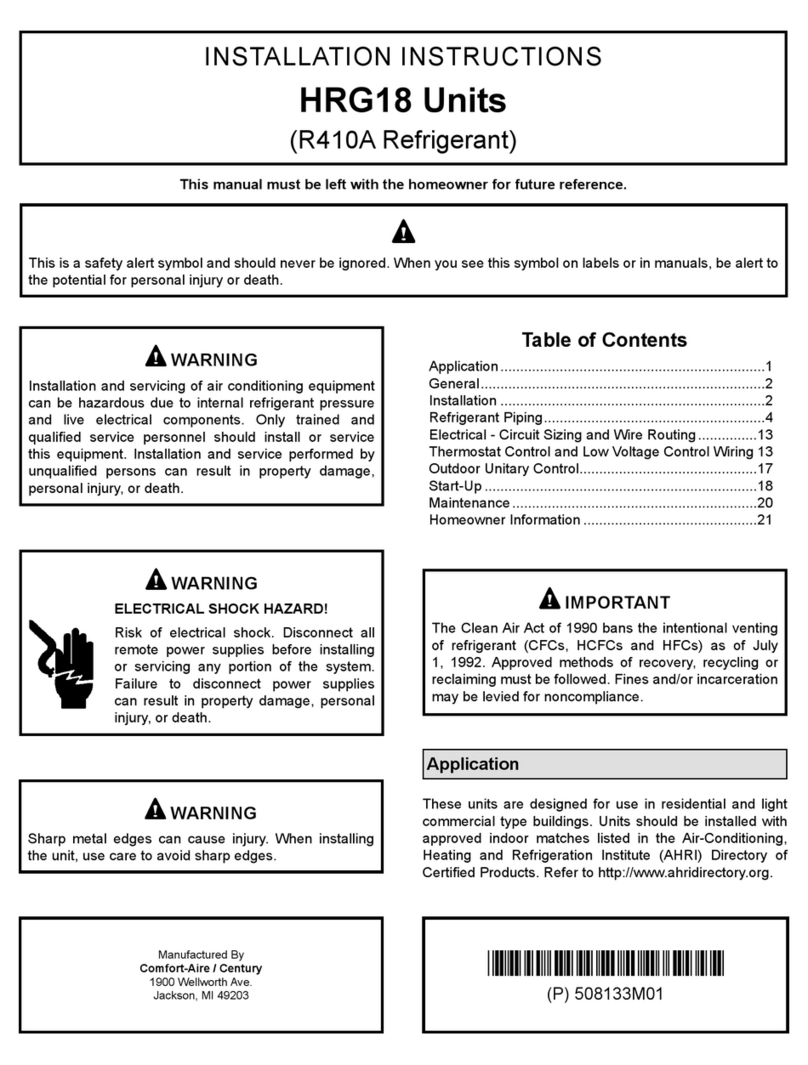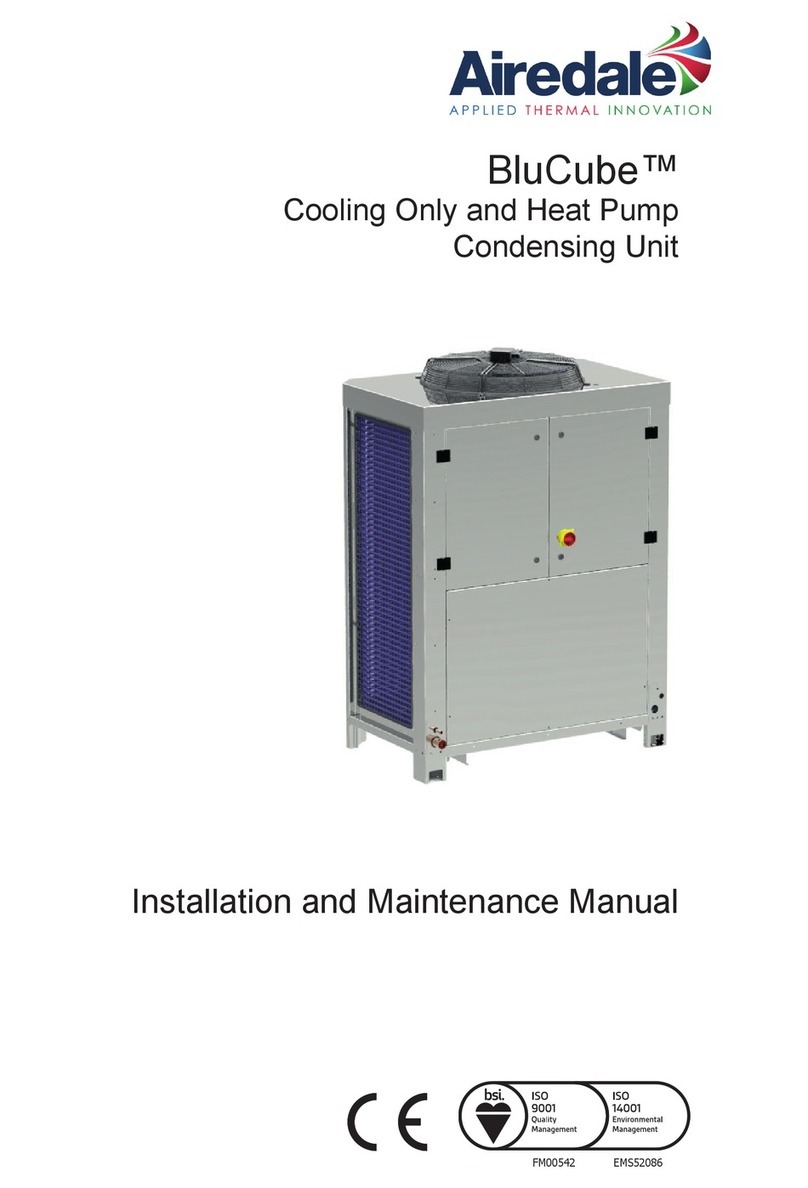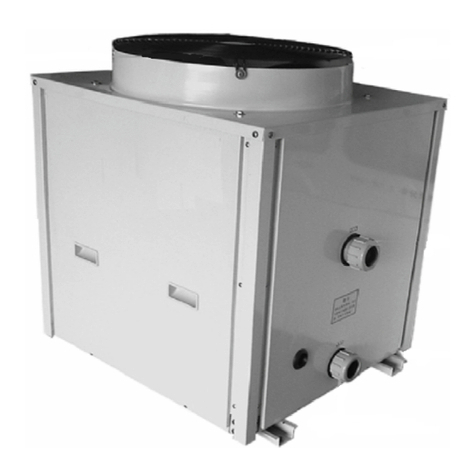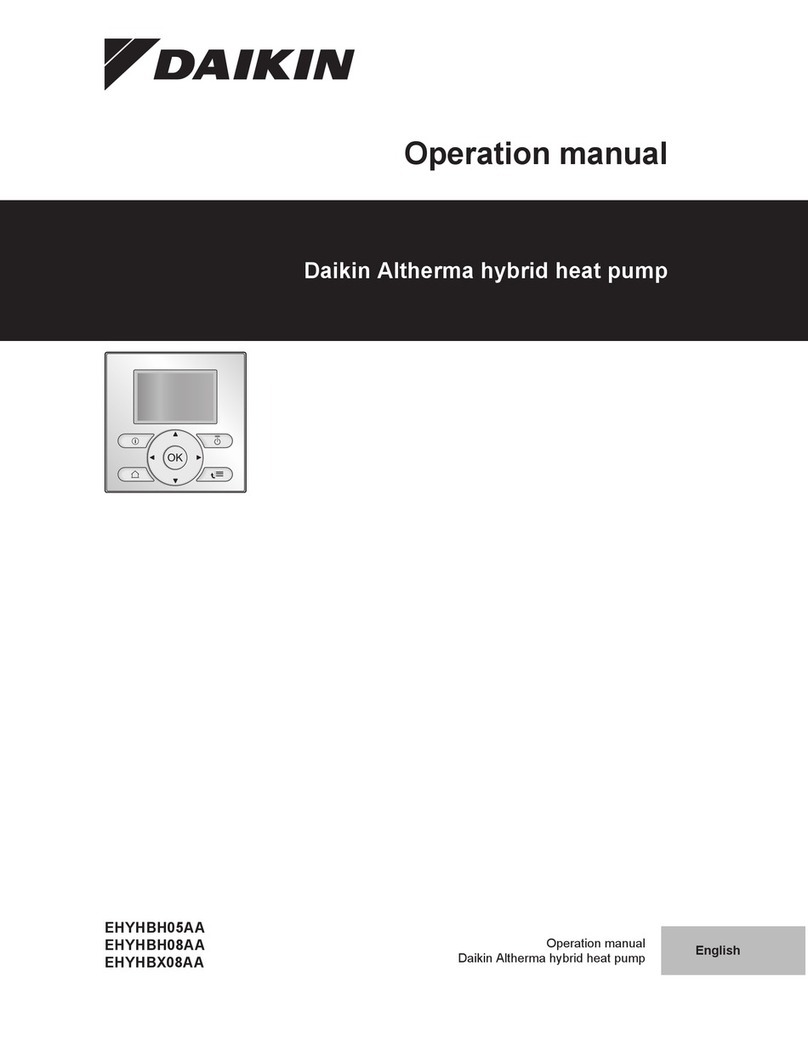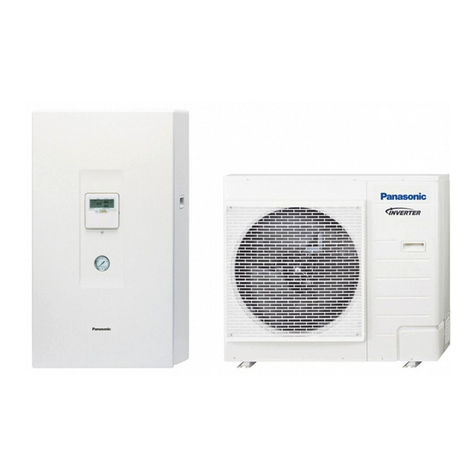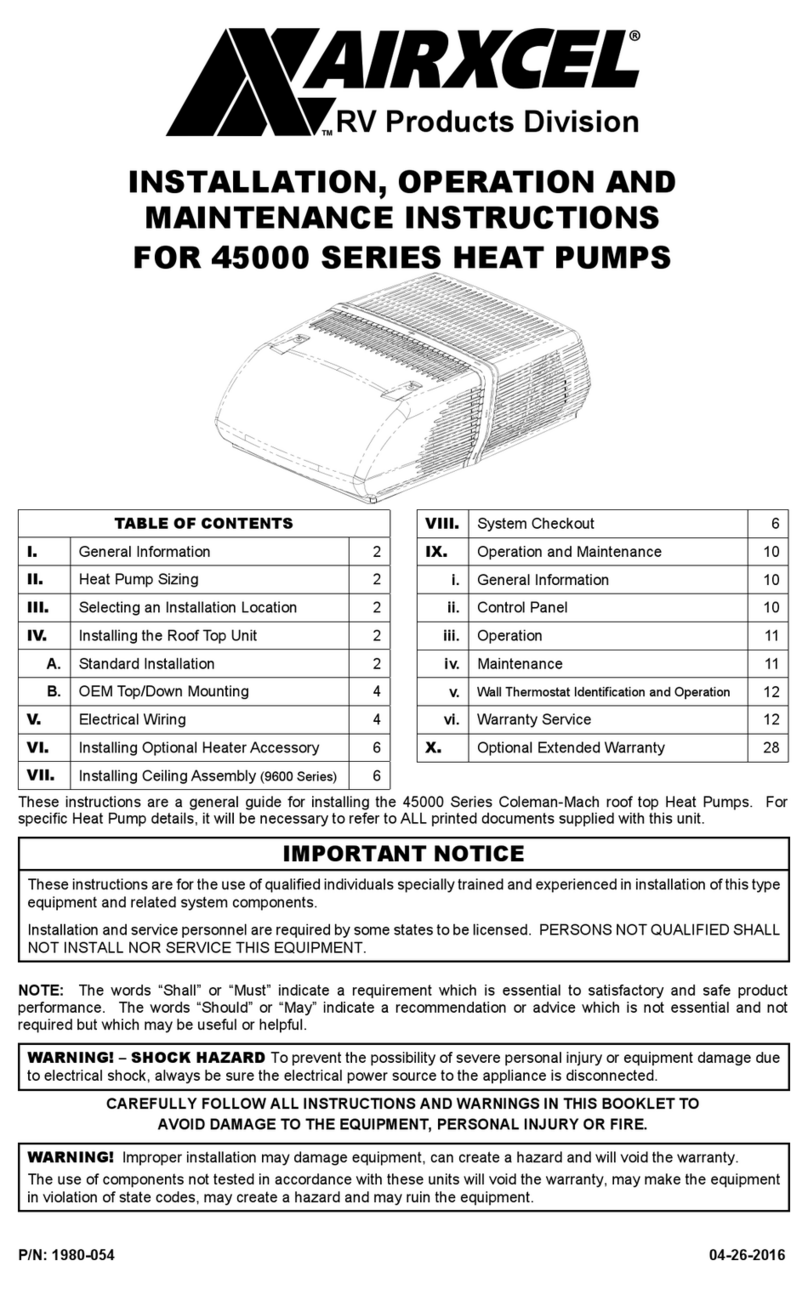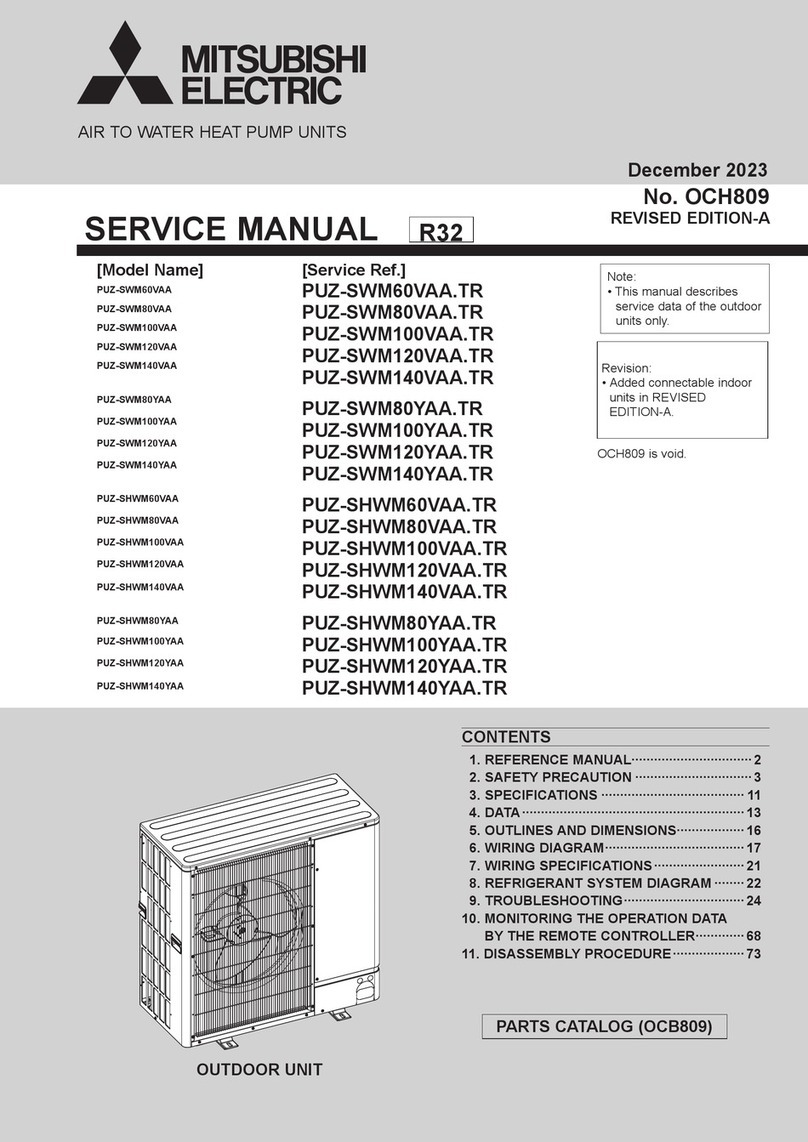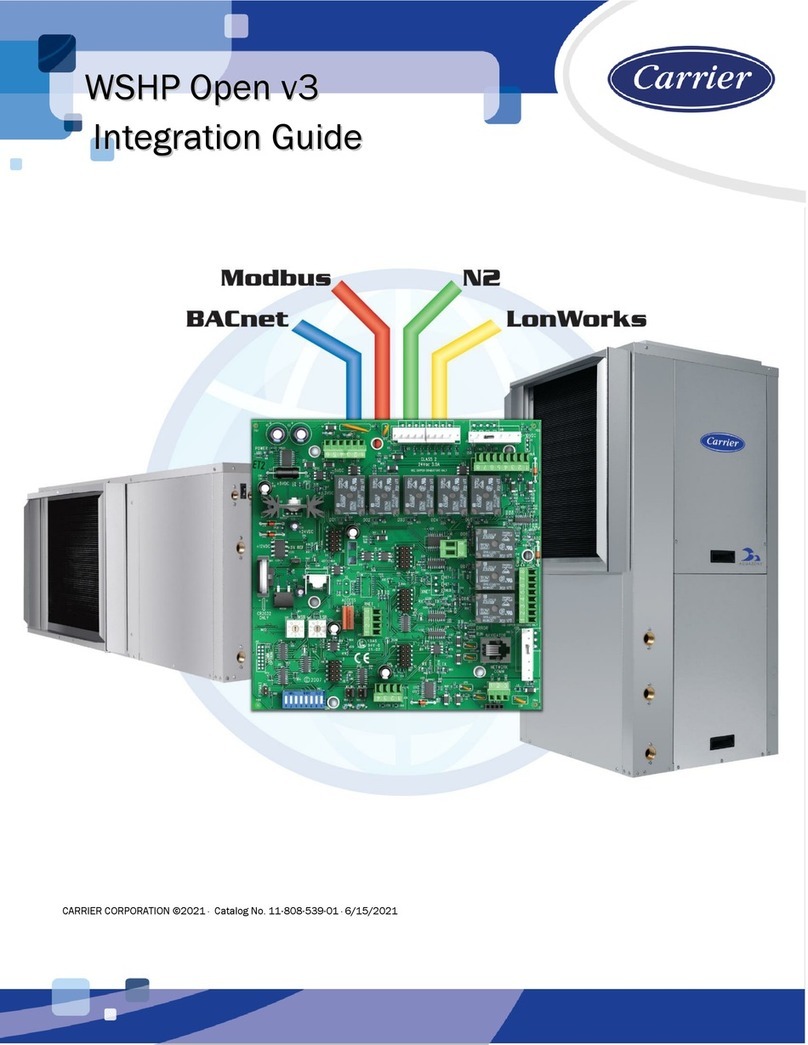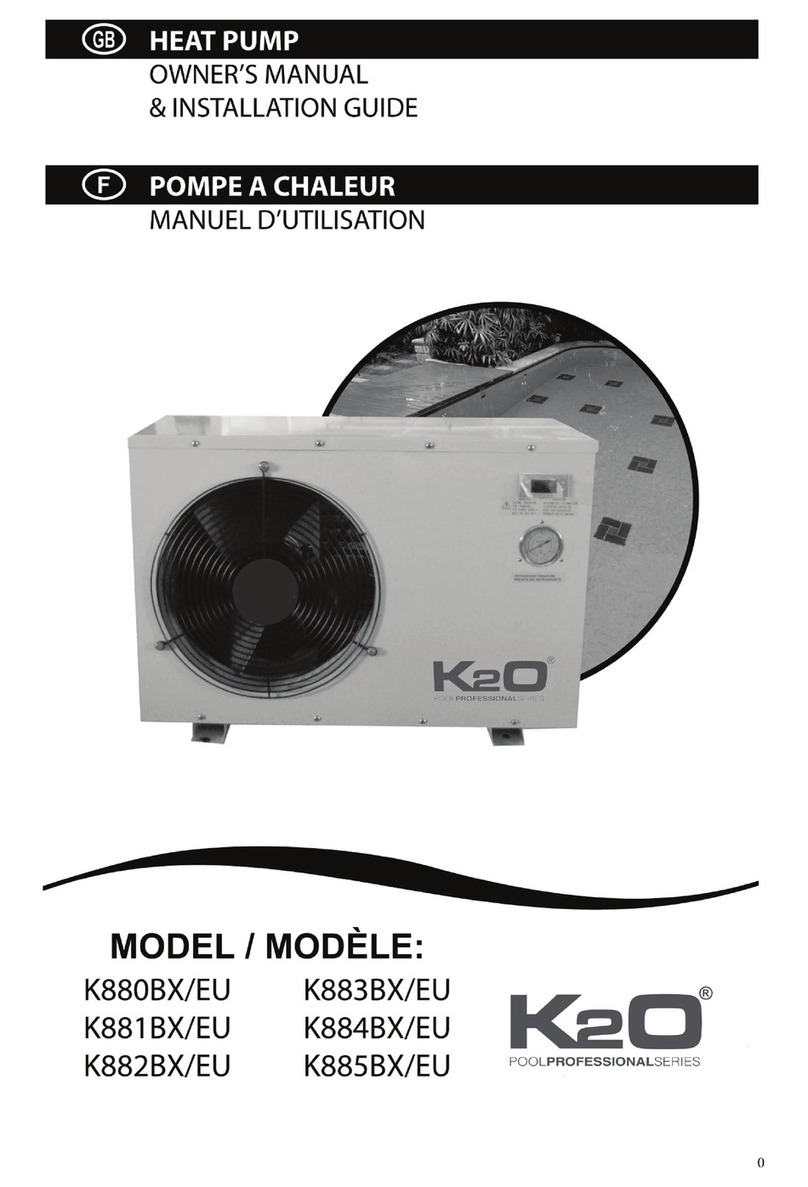
507710-01Page 4 of 16 Issue 1148
Installation of Line Sets
DO NOT fasten liquid or suction lines in direct contact with
the oor or ceiling joist. Use an insulated or suspension type
of hanger. Keep both lines separate, and always insulate
the suction line. Long liquid line runs (30 feet or more) in
an attic will require insulation. Route refrigeration line sets
to minimize length.
DO NOT let refrigerant lines come in direct contact with
foundation. When running refrigerant lines through the
foundation or wall, openings should allow for a sound and
vibration absorbing material to be placed or installed between
tubing and foundation. Any gap between foundation or wall
and refrigerant lines should be lled with a vibration damping
material.
Before making braze connections, be sure all joints are
clean. Before heat is applied for brazing, dry nitrogen should
be owing through the tubing to prevent oxidation and scale
formation on the inside of the tubing.
The following is the recommended method for making braze
connections at the refrigerant line connections:
1. Debur and clean refrigerant tube end with emery cloth
or steel brush.
2. Insert tubing into swage tting connection.
3. Wrap wet rags over valves to protect from heat.
4. Allow dry nitrogen to ow through refrigerant lines.
5. Braze joint, using a suitable brazing alloy for copper to
copper joints.
6. Quench the joint and tubing with water using a wet rag.
Leave rag on tting body and re-wet with water to help
cool area.
Leak Check
Refrigeration lines and indoor coil must be checked for leaks
after brazing and before evacuation. The recommended
procedure is to apply a trace amount of vapor refrigerant
(approximately two ounces or 3 psig) into the line set and
indoor coil, then pressurize with 150 psig of dry nitrogen.
Use a refrigerant leak detector to check all joints. The
system may also be checked for leaks using a halide torch
or pressure and soapy solution. After completion of leak
check, relieve all pressure from system before evacuation.
Evacuating And Charging Instructions
NOTE: Intentional release of CFC or HCFC refrigerant
to the atmosphere violates Federal Law. It may also
violate State and Local Codes. Check all Federal, State
and Local Codes before proceeding.
These outdoor units are pre-charged at the factory with
adequate refrigerant to handle 15 feet of refrigerant tubing.
NOTE: DO NOT use any portion of the charge for purging
or leak testing. It is mandatory that a thorough evacuation
of the refrigeration lines and indoor coil be performed.
The liquid line and suction line service valves have been
closed after nal testing at the factory. DO NOT disturb
these valves until the lines have been leak checked and
evacuated or the charge in the unit may be lost.
1. Connect the vacuum pump to the center hose of the
manifold gauge set, the low-pressure manifold gauge to
the vapor service valve and the high pressure manifold
gauge to the liquid service valve.
NOTE: Unnecessary switching of hoses can be avoided
and complete evacuation of all lines can be achieved by
also connecting a branch hose from the manifold gauge
center port to a cylinder of the proper refrigerant. Provide
a separate shut-off valve to vacuum pump to avoid
contaminating vacuum pump oil with refrigerant.
2. The valves should be kept in the “front seated” (closed)
position. This will allow evacuation of the refrigeration
lines and the indoor coil, without disturbing the factory
charge in the outdoor unit.
3. Follow the vacuum pump manufacturer’s instructions.
Allow the pump to operate until the system has been
evacuated down to 300 microns. Allow the pump to
continue running for an additional 15 minutes. Turn OFF
the pump and leave the connections secured to the two
(2) service valves. After 5 minutes, if the system fails
to hold 500 microns or less, check all connections for
tight t and repeat the evacuation procedure.
4. Isolate the vacuum pump from the system by closing
the shutoff valves on the gauge-set. Disconnect the
vacuum pump.
Opening Service Valves
After evacuation of the connecting lines, remove the service
valve cap and fully insert the hex wrench into the stem. A
back-up wrench is required on the valve body to open the
valve stem. Back-out counterclockwise until the valve stem
just touches the coined edge.
Wrench sizes:
3/8 service valve: 3/16” Hex wrench
3/4 service valve: 5/16” Hex wrench
7/8 service valve: 5/16” Hex wrench
If ANY refrigerant tubing is buried, provide a 6 inch
vertical rise at service valve. Refrigerant tubing lengths
up to 36 inches may be buried without further special
consideration. For lengths above 36 inches, consult your
local distributor.
CAUTION

